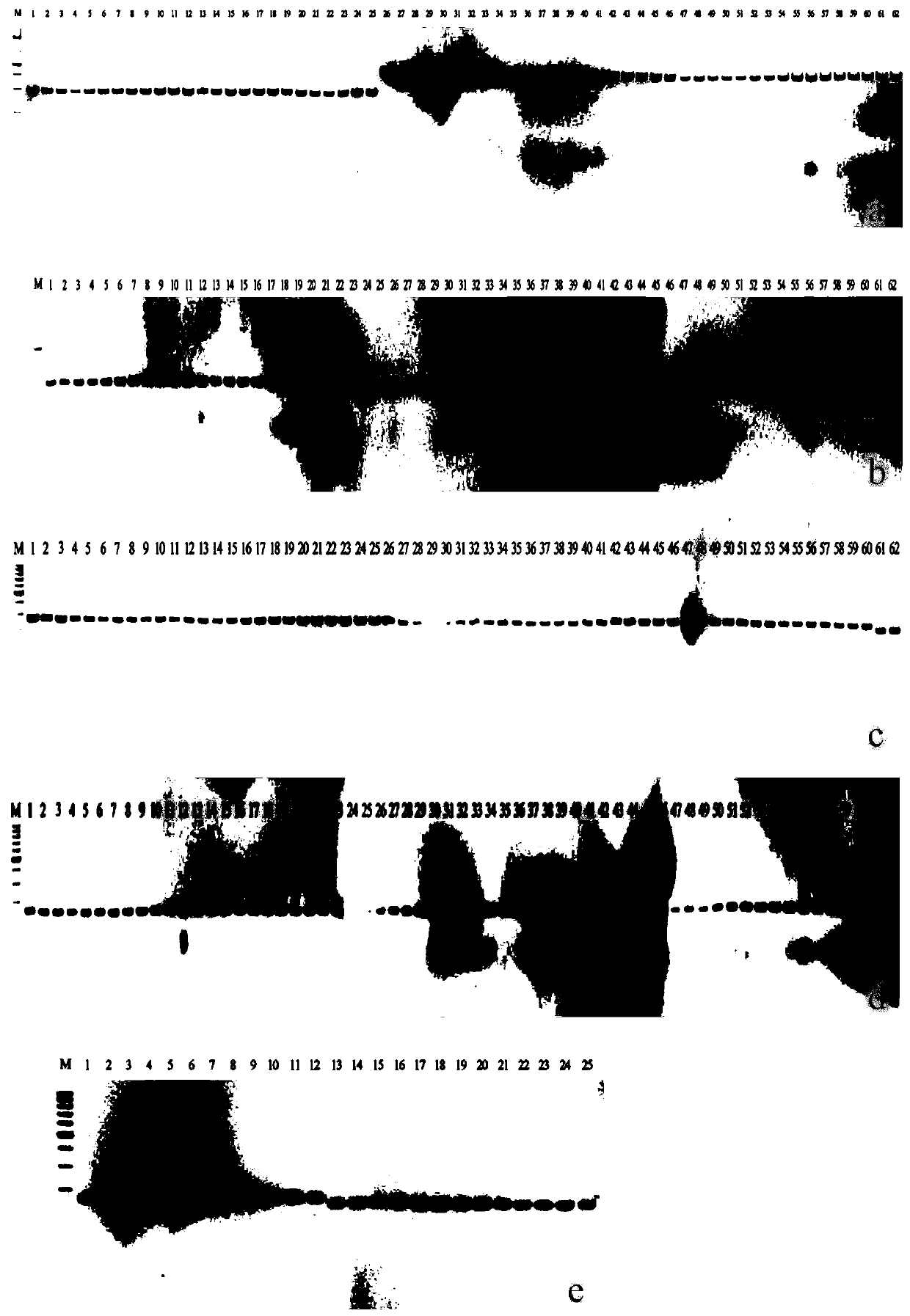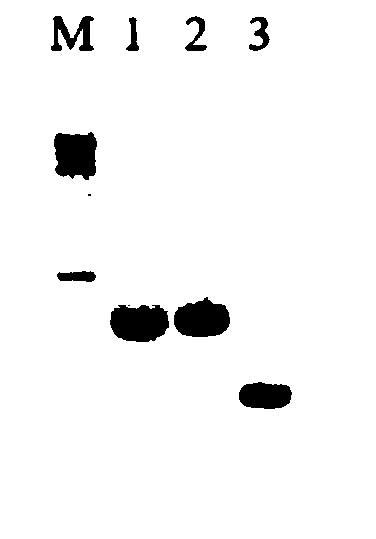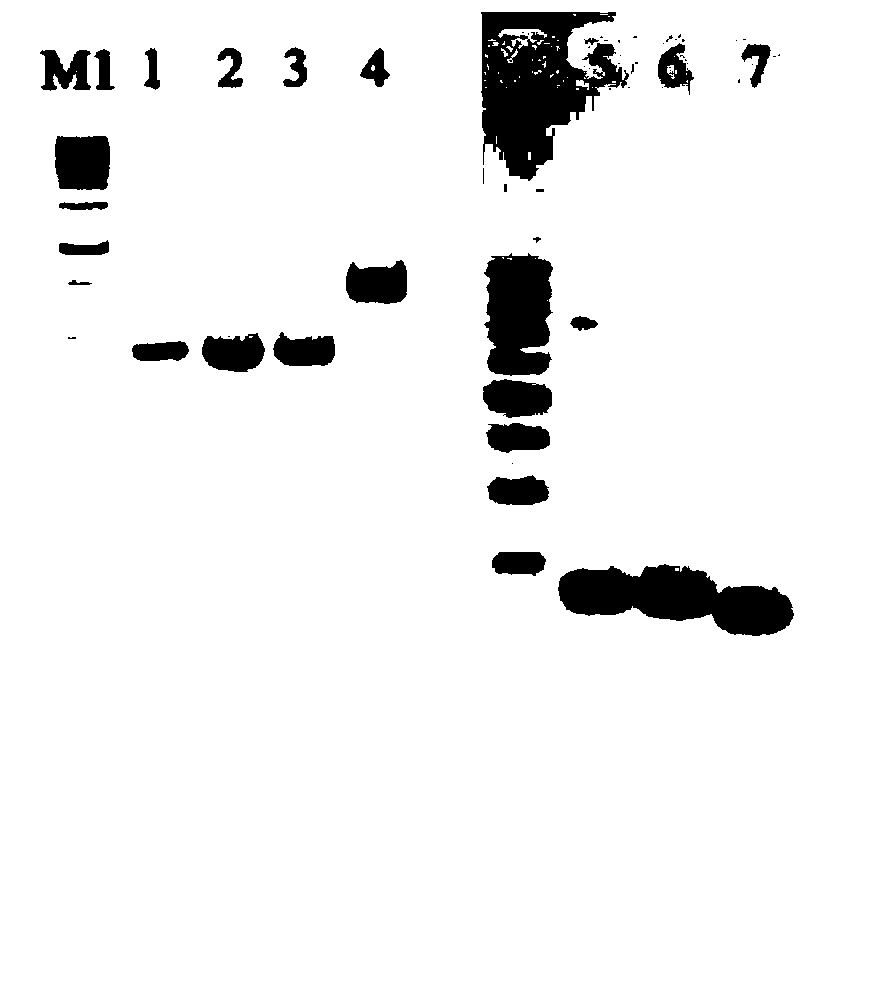Citrus mitochondrion InDel molecular markers and application thereof
A molecular marker, mitochondrial technology, applied in recombinant DNA technology, DNA/RNA fragments, microbial determination/inspection, etc., can solve the problems of poor specificity and narrow application range of citrus, achieve strong stability, save identification time, distinguish high rate effect
- Summary
- Abstract
- Description
- Claims
- Application Information
AI Technical Summary
Problems solved by technology
Method used
Image
Examples
Embodiment 1
[0058] (1) DNA extraction: Genomic DNA of 62 varieties of Citrus, Hovenia citrus, and kumquat were extracted by CTAB method, and the variety numbers are shown in figure 1 Description of drawings.
[0059] (2) PCR amplification: Utilize primer pair HBF / HBR, G1F / G1R, ZKF / ZKR, SJGF / SJGR to carry out PCR amplification to the genomic DNA of above-mentioned 62 varieties respectively, utilize primer pair BTCF / BTCR pair No. 1-25 varieties were amplified by PCR. The reaction system for PCR amplification is: 5 μL of PCR reaction Mix, 0.5 μL of forward and reverse primers (10 mmol / L), 1 μL of DNA template (100 ng / μL) and ddH 2 O 3 μL. The PCR amplification steps are: denaturation at 94°C for 5 minutes; 35 cycles of 94°C, 30s, 55°C, 30s, 72°C, 60s; 72°C, 5min, 12°C, 30min, and storage at 4°C.
[0060] (3) Electrophoresis detection: use 2.5% agarose gel electrophoresis to detect the amplified product, the conditions of the electrophoresis solution are: 1×TAE buffer solution (0.04M Tris-...
Embodiment 2
[0063] (1) DNA extraction: Genomic DNA of cytoplasmic hybrids Huayou 2, Guoqing 1 Wenzhou mandarin and Huayou 1 were extracted by CTAB method.
[0064] (2) PCR amplification: the genomic DNA of the above-mentioned citrus varieties was amplified by using the primer pair HBF / HBR. The reaction system for PCR amplification is: 5 μL of PCR reaction Mix, 0.5 μL of forward and reverse primers (10 mmol / L), 1 μL of DNA template (100 ng / μL) and ddH 2 O 3 μL. The PCR amplification steps are: denaturation at 94°C for 5 minutes; 35 cycles of 94°C, 30s, 55°C, 30s, 72°C, 60s; 72°C, 5min, 12°C, 30min, and storage at 4°C.
[0065] (3) Electrophoresis detection: use 2.5% agarose gel electrophoresis to detect the amplified product, and the conditions of the electrophoresis solution are: 1×TAE buffer solution (0.04M Tris-acetate, 0.001M EDTA, pH=8.0), voltage 60V , electrophoresis 80min. After electrophoresis, use the gel imaging system (UVP) to take pictures of the gel and save the pictures. ...
Embodiment 3
[0068] (1) DNA extraction: Genomic DNA of cocktail grapefruit, Shatian pomelo, National Day No. 1 Wenzhou mandarin and rock sugar orange were extracted by CTAB method.
[0069] (2) PCR amplification and electrophoresis detection 1: Genomic DNA of cocktail grapefruit, Shatian pomelo, rock sugar orange, and National Day No. 1 Wenzhou mandarin were amplified by using the primer pair HBF / HBR. The reaction system for PCR amplification is: 5 μL of PCR reaction Mix, 0.5 μL of forward and reverse primers (10 mmol / L), 1 μL of DNA template (100 ng / μL) and ddH 2 O 3 μL. The PCR amplification steps are: denaturation at 94°C for 5 minutes; 35 cycles of 94°C, 30s, 55°C, 30s, 72°C, 60s; 72°C, 5min, 12°C, 30min, and storage at 4°C. The amplified product was detected by 2.5% agarose gel electrophoresis, 1×TAE buffer solution (0.04M Tris-acetate, 0.001M EDTA, pH=8.0), voltage 60V, electrophoresis for 80min. After electrophoresis, use the gel imaging system (UVP) to take pictures of the gel an...
PUM
 Login to View More
Login to View More Abstract
Description
Claims
Application Information
 Login to View More
Login to View More - R&D
- Intellectual Property
- Life Sciences
- Materials
- Tech Scout
- Unparalleled Data Quality
- Higher Quality Content
- 60% Fewer Hallucinations
Browse by: Latest US Patents, China's latest patents, Technical Efficacy Thesaurus, Application Domain, Technology Topic, Popular Technical Reports.
© 2025 PatSnap. All rights reserved.Legal|Privacy policy|Modern Slavery Act Transparency Statement|Sitemap|About US| Contact US: help@patsnap.com



